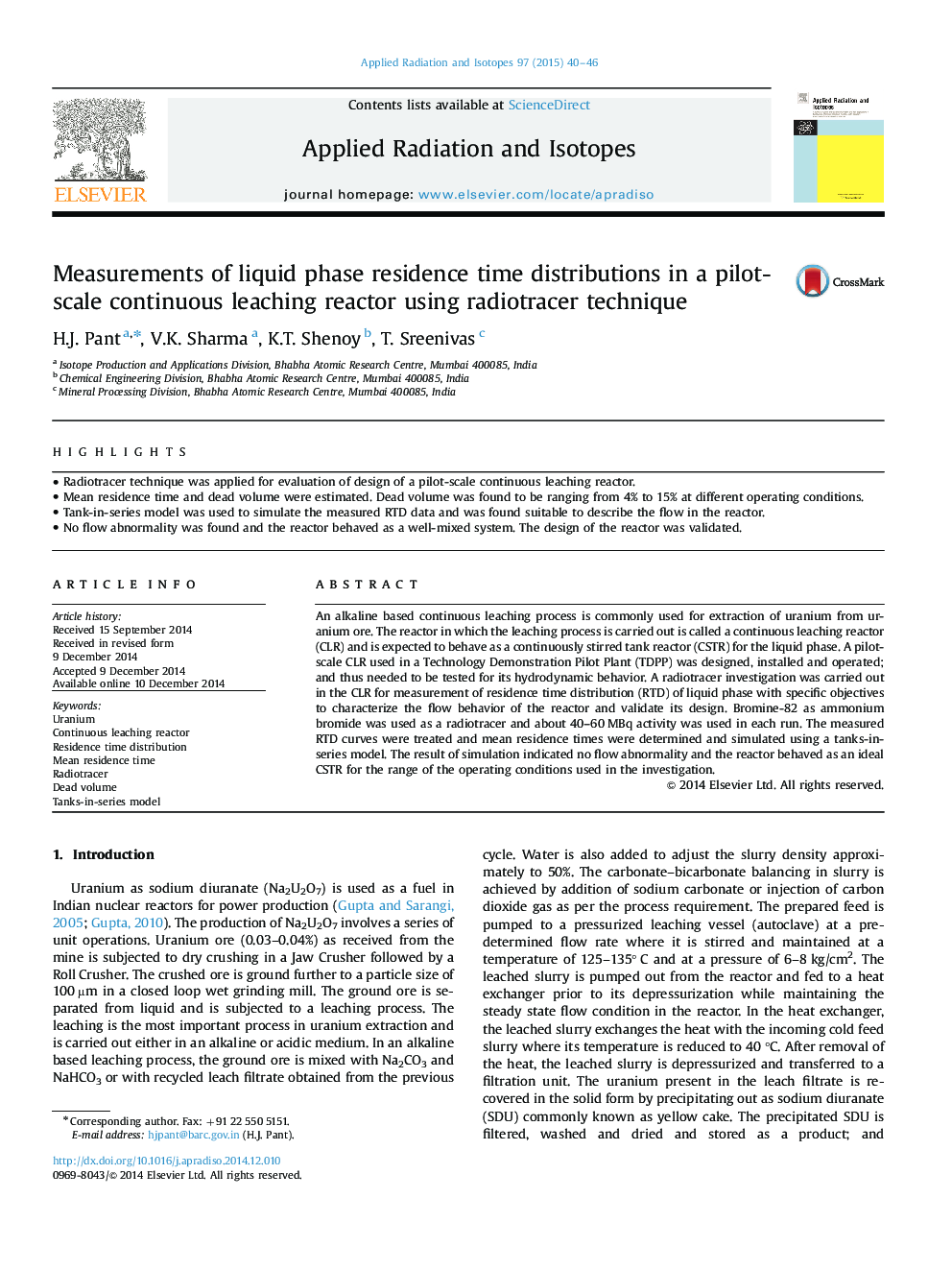| Article ID | Journal | Published Year | Pages | File Type |
|---|---|---|---|---|
| 8209719 | Applied Radiation and Isotopes | 2015 | 7 Pages |
Abstract
An alkaline based continuous leaching process is commonly used for extraction of uranium from uranium ore. The reactor in which the leaching process is carried out is called a continuous leaching reactor (CLR) and is expected to behave as a continuously stirred tank reactor (CSTR) for the liquid phase. A pilot-scale CLR used in a Technology Demonstration Pilot Plant (TDPP) was designed, installed and operated; and thus needed to be tested for its hydrodynamic behavior. A radiotracer investigation was carried out in the CLR for measurement of residence time distribution (RTD) of liquid phase with specific objectives to characterize the flow behavior of the reactor and validate its design. Bromine-82 as ammonium bromide was used as a radiotracer and about 40-60Â MBq activity was used in each run. The measured RTD curves were treated and mean residence times were determined and simulated using a tanks-in-series model. The result of simulation indicated no flow abnormality and the reactor behaved as an ideal CSTR for the range of the operating conditions used in the investigation.
Keywords
Related Topics
Physical Sciences and Engineering
Physics and Astronomy
Radiation
Authors
H.J. Pant, V.K. Sharma, K.T. Shenoy, T. Sreenivas,
